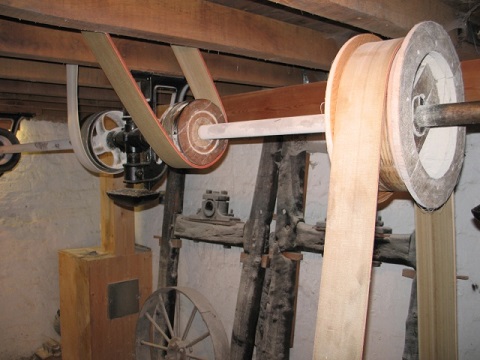13.2: Power and Efficiency in Rigid Bodies
- Page ID
- 54809
Related to the concepts of work and energy are the concepts of power and efficiency. At its core, power is the rate at which work is being done, and efficiency is the percentage of useful work or power that is transferred from input to output of some system.
Power
Power at any instant is defined as the derivative of work with respect to time. \[ P = \frac{dW}{dt} \]
If we look at the average power over a set period, we can simply measure the work done and divide that by the time. Work for a rigid body is defined as the force times the distance the center of mass travels, plus the moment times angle of rotation (in radians) for our body.
\[ P_{ave} = \frac{W}{t} = \frac{F*d + M * \Delta \theta}{t} \]
Using the definition of velocity (distance over time) and the definition of angular velocity (\(\Delta \theta\) over time), we arrive at a third equation for power at a given instant.
\[ P = F * v + M * \omega \]
The common units of power are watts for the metric system, where one watt is defined as one Joule per second or one Newton-meter per second, and horsepower in the English system, where one horsepower is defined as 550 foot-pounds per second.

Efficiency
Any devices with work/power inputs and outputs will have some loss of work or power between that input and output due to things like friction. While energy is always conserved, some energies such as heat may not be considered useful. A measure of the useful work or power that makes it from the input of a device to the output is the efficiency. Specifically, efficiency is defined as the work gotten out of a device divided by the work put into the device. With power being the work over time, efficiency can also be described as power out of a device divided by the power put into a device (the time term would cancel out, leaving us with our original definition).
\[ \eta = \frac{W_{out}}{W_{in}} = \frac{P_{out}}{P_{in}} \]
It is impossible to have efficiencies greater than one (or 100%) because that would be a violation of the conservation of energy; however, for most devices we wish to get the efficiencies as close to one as possible. This is not only because it does not waste work/power, but also because any work or power that is "lost" in the device will be turned into heat that may build up.
Example \(\PageIndex{1}\)
The input to a gearbox has a measured 32 foot-pounds of torque at 700 rpm. The output has 207 foot-pounds of torque at 100 rpm.
- What is the power at the input?
- What is the power at the output?
- What is the efficiency of the gearbox?

- Solution
-
Video \(\PageIndex{2}\): Worked solution to example problem \(\PageIndex{1}\), provided by Dr. Majid Chatsaz. YouTube source: https://youtu.be/Zauv-wZN_CE.


